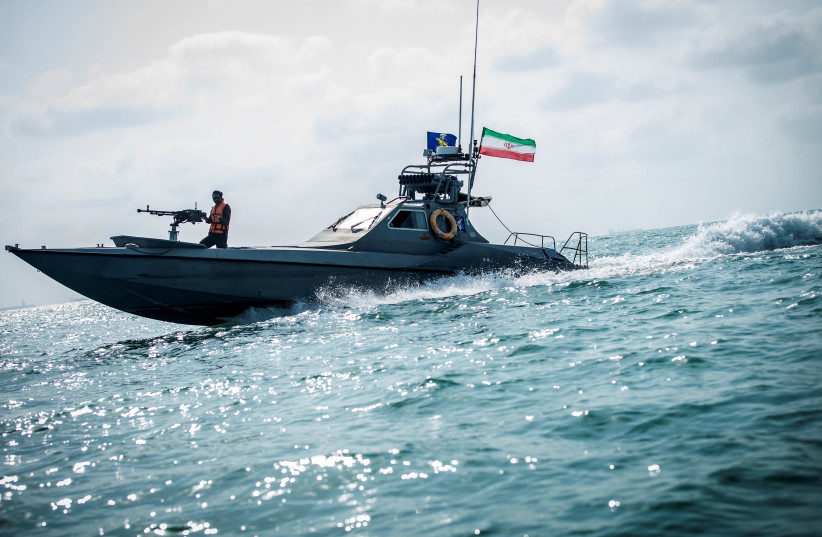Iranian media claims that Iran’s Islamic Revolutionary Guard Corps humiliated the United States in a unique operation that supposedly prevented “piracy” against Iranian oil.
Tehran claims that Washington interdicted an Iranian oil tanker and confiscated the oil, and that Iran then sent the IRGC, which landed on the tanker using helicopters and took it back to Iran.
The Islamic Republic is under US sanctions, and recent reports had said that it was trying to renew exports of oil to various countries, such as China.
This is not the first time that the US has off-loaded Iranian oil. It seized fuel from four tankers in August 2020. More than a million barrels of Iranian oil were confiscated and sold in that incident, which involved four Iranian ships.
Back in 2019, the Iranian tanker Grace 1 was intercepted by British Royal Marines but was then released from Gibraltar. Renamed Adrian Darya, the tanker turned off its AIS tracking beacon and went to Syria after the incident. Meanwhile, Iran tried to intercept the British Heritage tanker and then seized the British Stena Impero tanker in the fall of 2019, eventually releasing it in September 2019.

Iran frequently tries to send fuel to Syria and now even to Lebanon. This has led to other tensions. The Wall Street Journal reported in March that Israel had attacked Iranian tankers bound for Syria. An alleged IRGC covert “mother ship” called Saviz was also attacked in April in the Red Sea, according to reports. The MV Helios Ray was attacked in February. That ship was said to be Israeli-owned in reports. Other incidents followed: the Lori was attacked in March and the Tyndall in July. The MV Hyperion Ray was also attacked in April.
The United States Naval Institute said in late July that “an exploding drone killed two crew members aboard a merchant tanker off the coast of Oman, US Fifth Fleet said in a late Friday statement. The two were crew members aboard the Liberian-flagged tanker Mercer Street when the ship was hit with at least one explosive-laden unmanned aerial vehicle late Thursday, according to the statement.”
This is the context of the new reports that an Iranian tanker was stopped and its fuel taken by the US, only to have Iran supposedly retake a different tanker carrying the fuel. Tehran leaked details of a “pirate” attack on November 1. That now appears to be the same story revealed by the Islamic Republic on Wednesday. For Iran, the US is “pirates.”
The danger in these situations is that things could go wrong for either country during these attempts by Iran to retake a ship or harass other ships. Iran already killed two innocent crew in the attack in July. It views these waters as its backyard and likes to show off that it can harass the US and others.
In May and June 2019, for instance, Iran mined ships off the coast of the UAE. In October it said it intercepted a US naval vessel. Back in April the US Navy fired warning shots after Iran harassed an American ship.
Iran is seeking to increase its naval capabilities. It uses drones and fast boats, and two of its ships recently sailed to Russia.
The tensions now between Iran, the US and Israel mean that one of these incidents could spiral out of control.
Tehran wants to test US resolve. It is unclear how America will respond to the recent incident. It could become just another story of Iran grabbing a ship, like the story of the Gulf Sky, a ship that disappeared in 2020 and then reappeared in Iran – or it could become something much worse.
